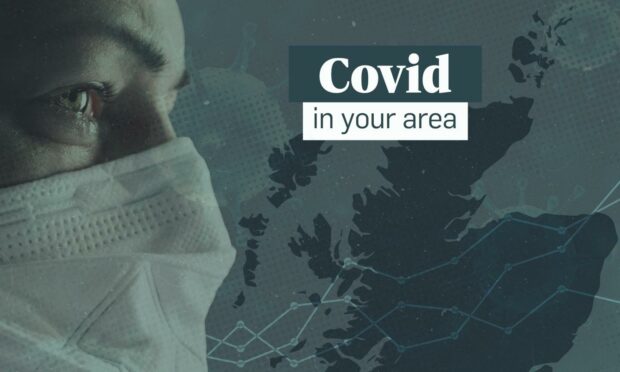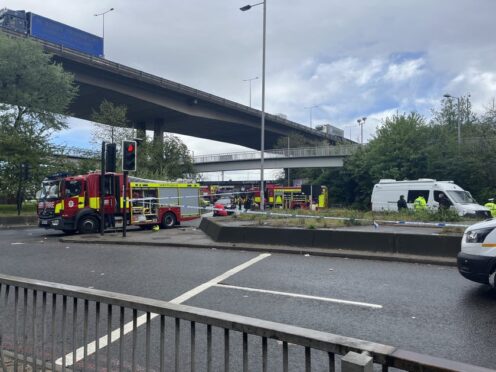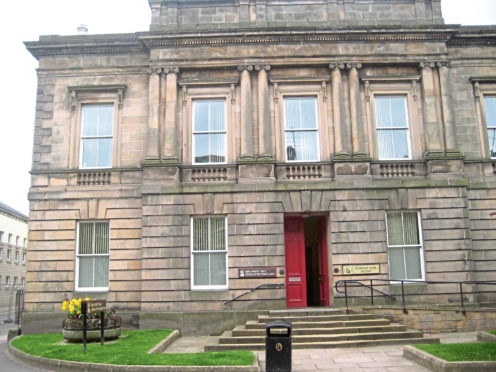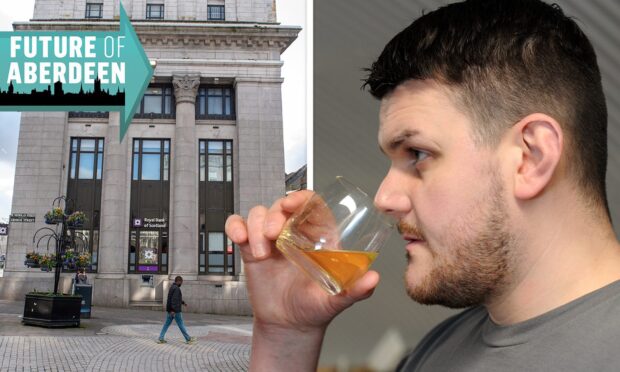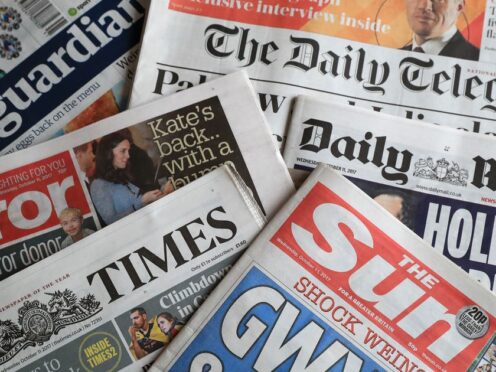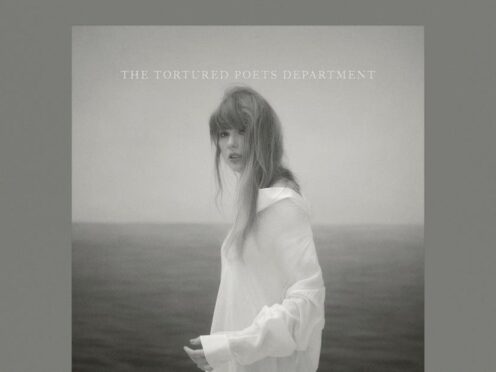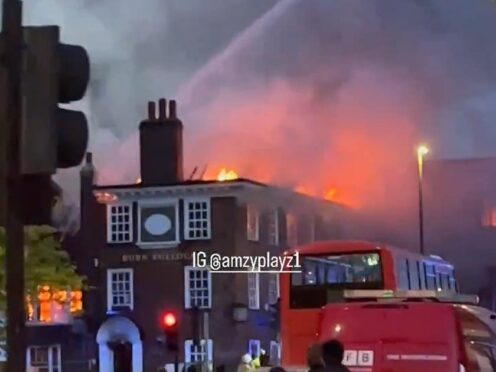Changes to testing policy came into effect on May 1 as Scotland transitions into a new ‘endemic’ phase of Covid surveillance. We’ve taken a look at the rate of Covid cases in Aberdeen, Aberdeenshire, Moray and the Highlands.
Things continue to look positive across the country as daily Covid hospitalisations, deaths and cases fall.
Yesterday, May 4, the average daily number of Covid cases over seven days in Scotland fell below 2,000 for the first time since August of last year.
The transition plan seeks to move Scotland away from the emergency response phase of the pandemic to “living with endemic Covid-19”.
As a result, many Covid testing sites have now been closed and the usefulness of daily reports is therefore limited.
From May 9, PHS will release Covid updates twice a week, and move to weekly updates from June.
Case rates across the north and north-east were low this week compared to recent months, with all neighbourhoods recording seven-day case rates below 600 per 100,000 population.
Reduction in case rates, which do reflect a genuine fall, may also reflect reduced uptake in testing and going forward may be further affected by closures of testing centres.
As a result, we will no longer be publishing weekly updates on neighbourhood level case rates, unless circumstances change.
Find Covid case rates in your area
Our interactive maps below shows the rate of Covid cases by intermediate zone for Aberdeen, Aberdeenshire, Highland and Moray. The islands have not been included as case numbers tend to be very low and are often suppressed as a result.
Below includes details for case rates accurate as of May 2, which was the latest information at the time of writing, as this data is subject to a three-day lag in being uploaded by Public Health Scotland.
Each intermediate zone (IZ), represents an area, quite often a neighbourhood, within each local authority.
Hovering over each area will give additional information including the population of each neighbourhood, how many positive cases have been recorded there in the past seven days, and the seven-day case rate per 100,000 population – a measure which is used to compare areas with different populations against each other to accurately track the spread of the virus.
We have compared case rates to previous weeks to provide context about whether Covid cases in Scotland are rising or falling in your area. This data shows Covid cases only, you can track data on Covid deaths in Scotland here.
What are the rates of Covid cases in Aberdeen?
The below chart shows the rate of Aberdeen Covid cases for each neighbourhood in the city.
This week the three neighbourhoods in the city with the highest case rates were Hazlehead, West End South, and Danestone.
Hazlehead had a case rate of 430 per 100,000 population, and 25 positive cases in the previous seven day period out of a population of 5,811.
Meanwhile, West End South had a case rate of 385 per 100,000 population and 24 Covid-19 cases out of 6,230 people living there. Danestone had a case rate of 357 per 100,000 population and 14 cases out of 3,919 residents.
Of the 49 neighbourhoods in Aberdeen, 42 saw a decrease in case rates compared to last week (86%) while 1sixsaw an increase (12%).
Last week the top three neighbourhoods were Ashgrove; Cove North; and Balgownie and Donmouth West.
What are the rates of Covid cases in Aberdeenshire?
The below chart shows the rate of Aberdeenshire Covid cases for each neighbourhood in the region.
The neighbourhoods with the highest case rates in Aberdeenshire were Peterhead Bay, Fraserburgh Central-Academy, and Mintlaw.
Peterhead Bay had a case rate of 593 per 100,000 population, and had 14 cases within the area, out of 2,361 people.
Fraserburgh Central-Academy had a case rate of 524 per 100,000 population, with 13 cases recorded in the past seven days out of 2,479 residents.
Meanwhile, Mintlaw had a case rate of 507 per 100,000 population and 13 positive cases out of a population of 2,563.
Of the 59 neighbourhoods in Aberdeenshire, 49 saw a decrease in case rates compared to last week (83%) while eight increased (14%)
Last week, the top three neighbourhoods were Mintlaw, Cruden and Ellon East.
What are the rates of Covid cases in Moray?
The below chart shows the rate of Moray Covid cases for each neighbourhood.
In Moray, the neighbourhoods with the highest case rates this week were Mosstodloch, Portgordon and seaward; Keith and Fife Keith; and Lossiemouth West.
Mosstodloch, Portgordon and seaward had a case rate of 425 per 100,000 population and recorded 15 positive cases in a population of 3,532.
Keith and Fife Keith had a case rate of 401 per 100,000 population and 18 positive cases out of its 4,488 residents, while Lossiemouth West had a case rate of 382 per 100,000 population and 16 cases out of 4,192 people.
Of the 24 neighbourhoods in Moray, 20 saw a decrease in case rates compared to last year (83%), while three increased (13%)
Last week, the top three neighbourhoods were Mosstodloch, Portgordon and seaward; Fochabers, Aultmore, Clochan and Ordiquish; and Elgin Bishopmill East and Ladyhill.
What are the rates of Covid cases in the Highlands?
The below chart shows the case rates for each neighbourhood in the Highlands.
The top three neighbourhoods in the Highlands with the highest Covid case rates were Muir of Ord, Wick South, and Inverness Muirtown.
Muir of Ord had a case rate of 532 per 100,000 population, and 19 positive cases in the previous seven day period, out of 3,572 people living there.
Wick South had a case rate of 526 per 100,000 population and 18 Covid-19 cases out of 3,420 residents, while Inverness Muirtown had a case rate of 514 per 100,000 population, recording 19 cases out of its 3,694 population.
Of the 56 neighbourhoods in the Highlands, 47 saw a decrease in case rates compared to last year (84%) while nine increased (16%).
Last week, the top three neighbourhoods were Inverness Kinmylies and South West; Thurso East; and Inverness Crown and Haugh.
Comparing the north and north-east
The below chart shows the seven day case rate in each local authority, including the islands, since March 2020.
How do north and north-east Covid case rates compare to the rest of Scotland?
The below chart shows the top 10 neighbourhoods in Scotland with the highest Covid case rate per 100,000 population.
This week, Harris recorded the second highest case rate in Scotland, with a case rate of 842 per 100,000 population.
Overall, six of the top ten affected neighbourhoods are in the north and north-east this week.
Central Shetland and North Mainland (Shetland) were fourth and fifth highest respectively, while Peterhead Bay (Aberdeenshire) placed sixth.
Lerwick South (Shetland) and Muir of Ord (Highland) recorded the ninth and tenth highest case rates in Scotland respectively.
